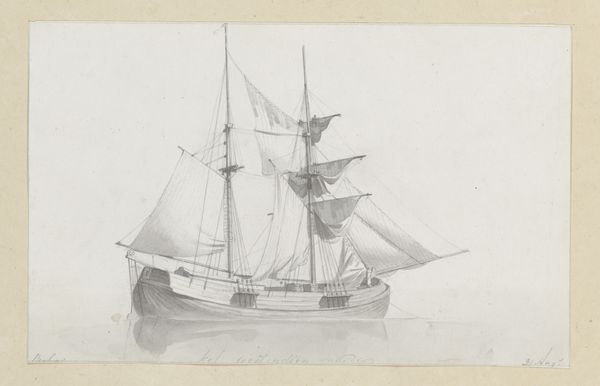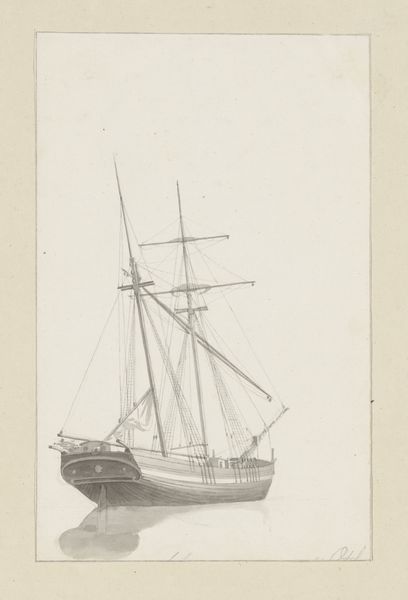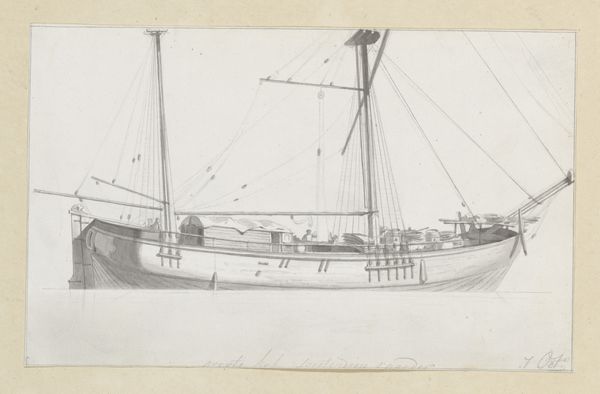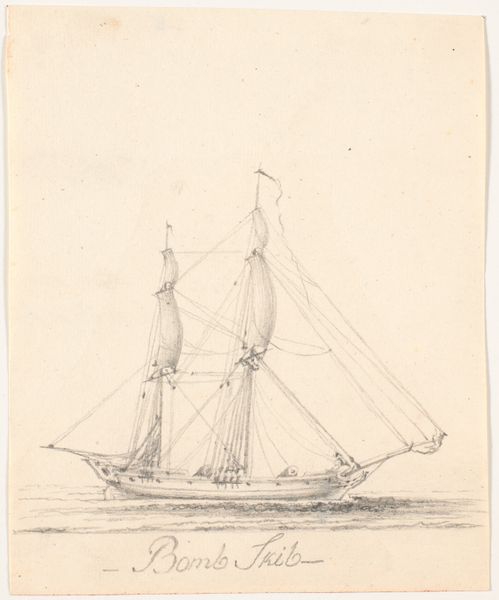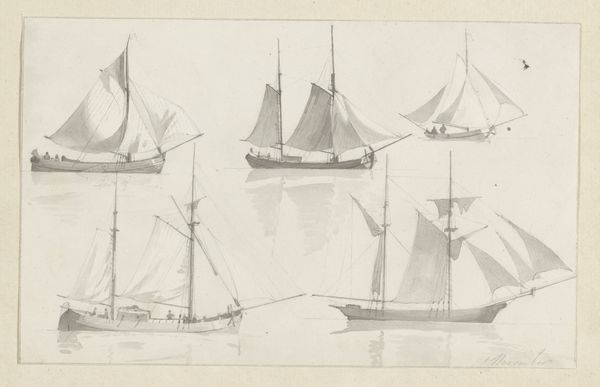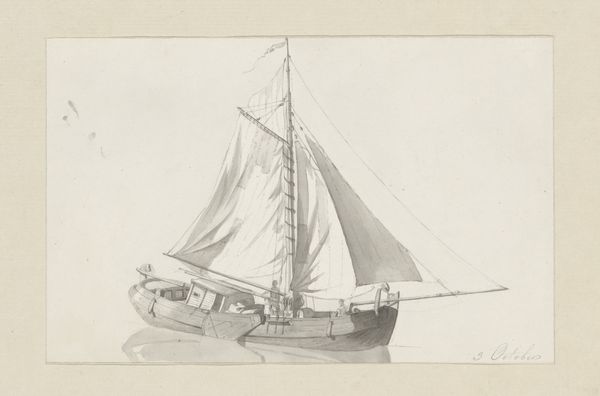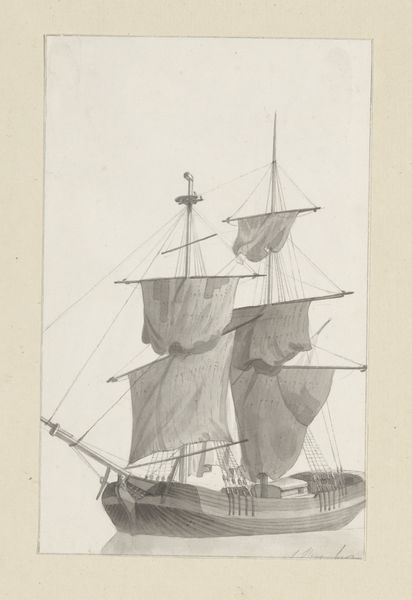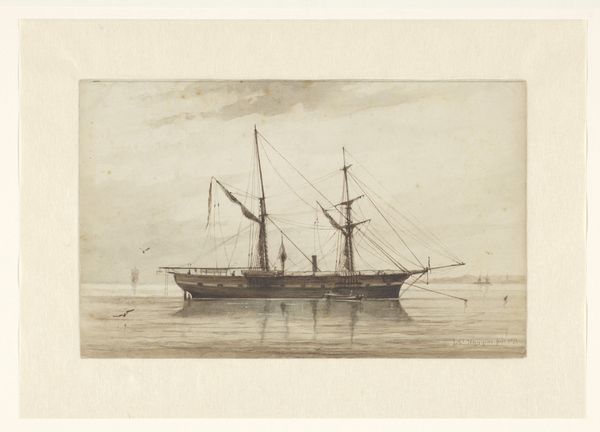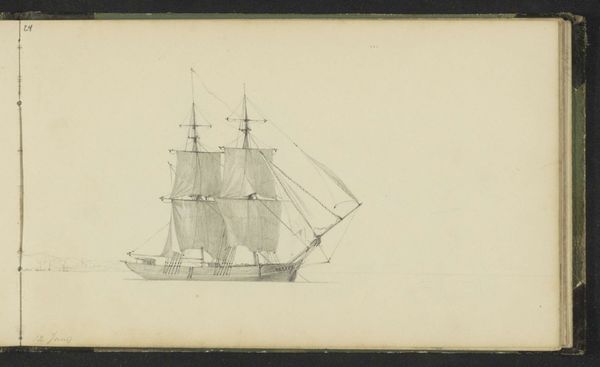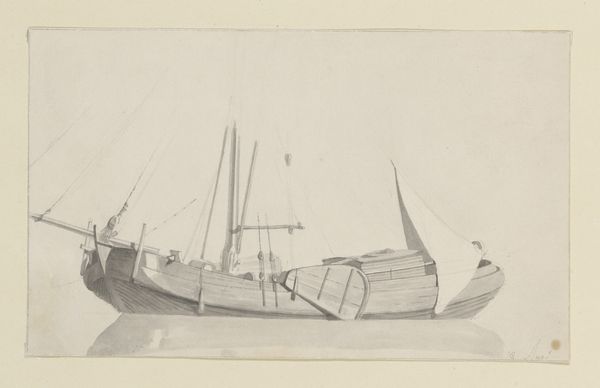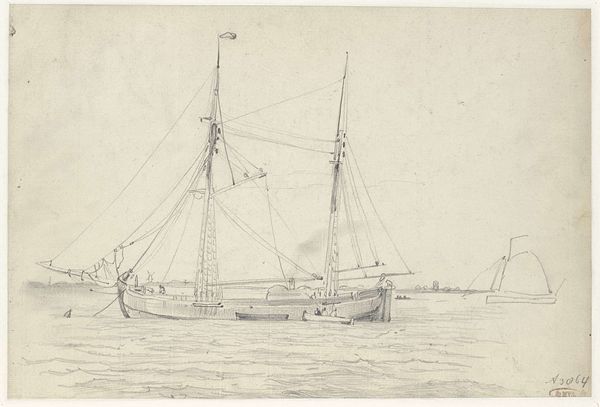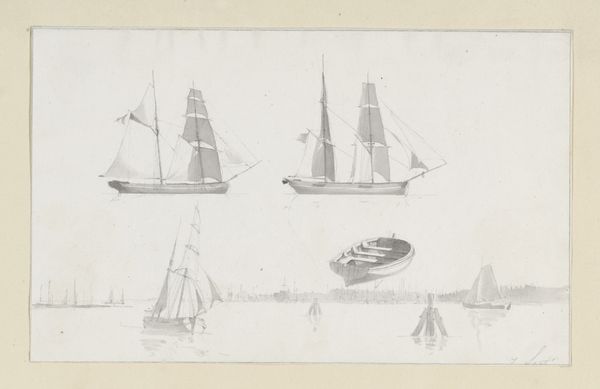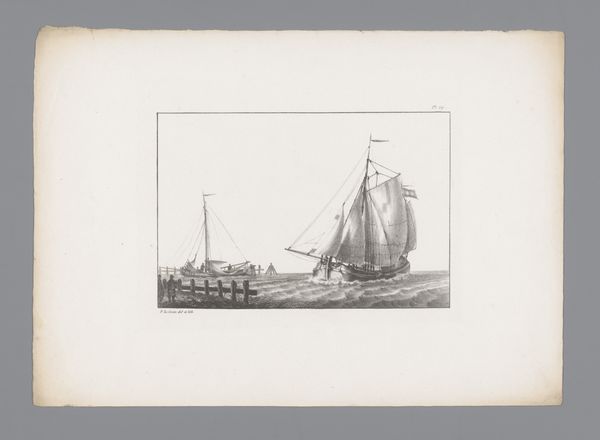
drawing, paper, ink, pencil
#
drawing
#
light pencil work
#
landscape
#
paper
#
ink
#
pencil
#
realism
Dimensions: height 124 mm, width 195 mm
Copyright: Rijks Museum: Open Domain
Curator: Let's take a moment with this work from 1853, "Zeilschip" or "Sailing Ship," created by Hendrik Abraham Klinkhamer. It’s a drawing executed in pencil and ink on paper, currently residing here at the Rijksmuseum. Editor: It has an ethereal quality, doesn't it? The composition, the muted palette...it's quite delicate. It almost looks as though the ship is emerging from a fog. The balance between line and wash is beautifully executed. Curator: Absolutely. Consider the sociopolitical context in which this work was created. Mid-19th century Netherlands was a period of burgeoning maritime trade and global exploration. Drawings like this speak not only to artistic skill, but also the cultural and economic importance of seafaring at the time. Editor: And Klinkhamer's treatment of light here contributes significantly to the image's success. Notice how the faintest wash suggests reflections on the water. Also, the interplay of verticals and diagonals, of the masts and sails, creates a captivating rhythm. It’s a tightly composed work, in many ways. Curator: Furthermore, who were the audiences for works like this? Was it simply for artistic appreciation, or did they serve some function related to trade or naval documentation? The subject matter points to how Dutch identity and prosperity were intimately bound up with their colonial projects and exploitation. Editor: That's fascinating to consider. On a purely visual level, the restricted tonal range—essentially grayscale—allows us to focus entirely on form and texture. The artist seems less interested in rendering color than in conveying the feeling of light, atmosphere, and form. The texture and gradient that you find in the sails does lend this effect very beautifully, I might add. Curator: Exactly. The legacies of colonialism continue to shape our world, impacting trade dynamics, labor practices, and the uneven distribution of resources across the globe. It also prompts a critical look at the stories that artwork tells and what remains untold. Editor: Indeed. Seeing how meticulously constructed this vessel looks inspires a sort of wonder in the capacity of artistry that I wasn't aware of before. The ability to transform paper and ink into this ghostly and yet accurate scene feels to me to reflect mastery.
Comments
No comments
Be the first to comment and join the conversation on the ultimate creative platform.
